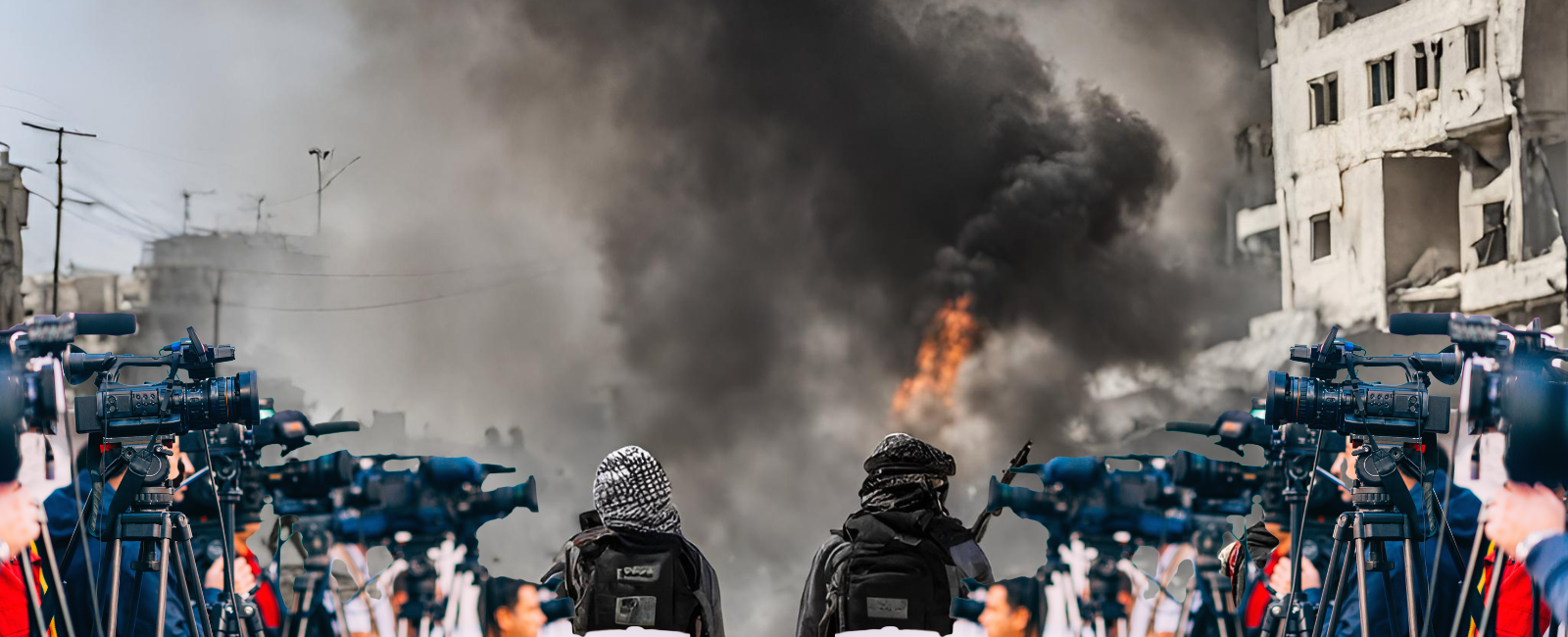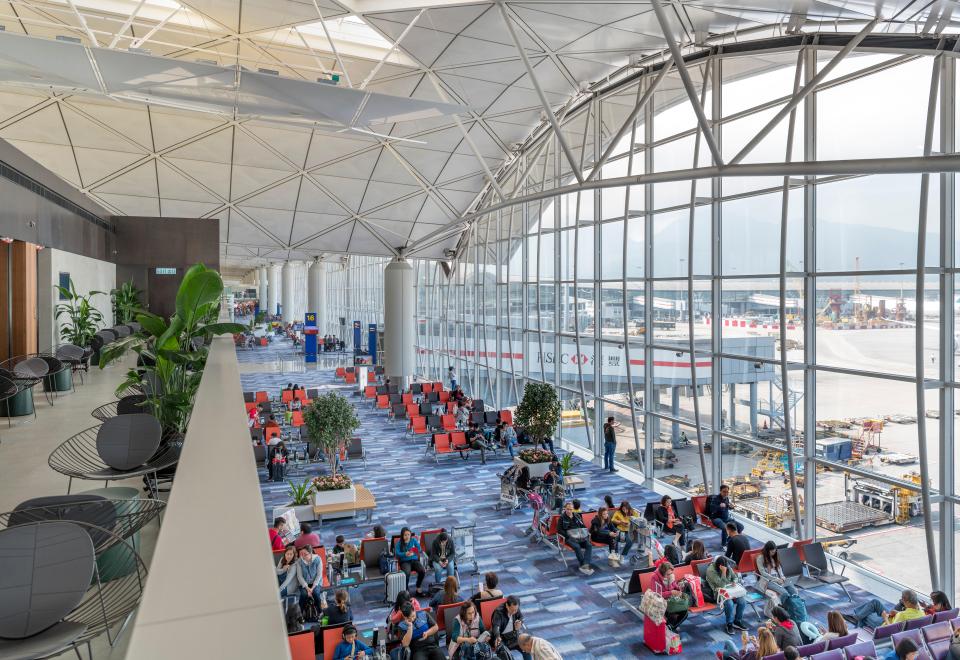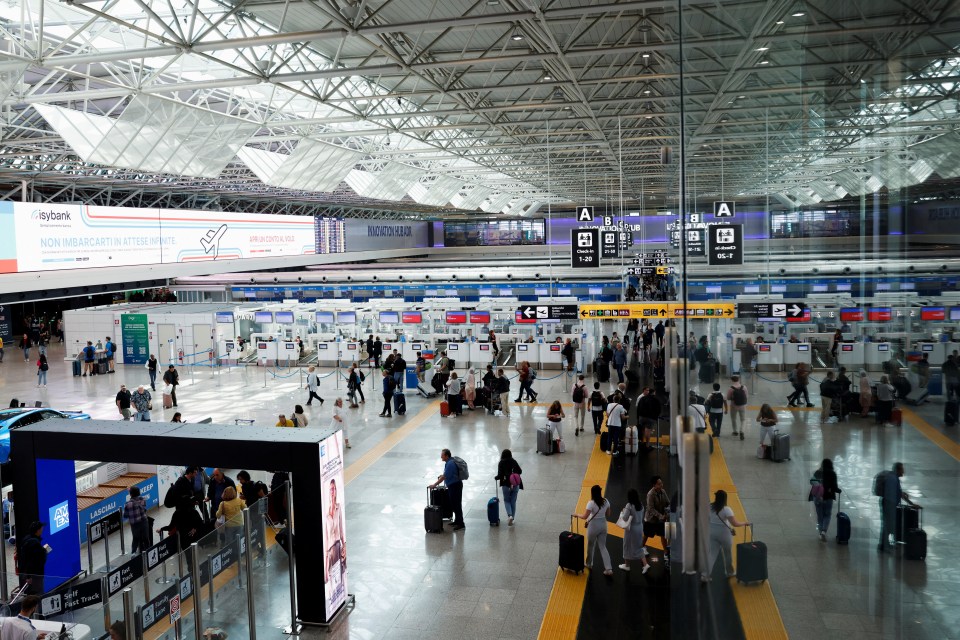2.8K
By Robin Andersen
On October 6, 2023, Hamas broke out of Gaza, lobbed rockets, and sent fighters into Israeli territory. The attacks killed hundreds of Israeli soldiers and civilians. Images of violence and brutality were recorded and distributed widely over broadcast news over and over again, repeatedly showing abused, bloodied, and crying women and children. The violence was presented with voices of US and Israeli officials asserting that the attack was “unprecedented.” Israel retaliated immediately and bombed the Gaza Strip, one of the most densely populated places on the globe. Photographs of death and destruction ran side by side, each with only brief captions about location. Many news outlets reported that the violence came out of nowhere, offering no historical context. The attacks therefore were without motivation, attributed only to the pure evil of Hamas and Palestinian terrorists.
German media scholar Hektor Haarkötter, who partners with Project Censored for his work with the News Enlightenment Initiative, was recently in the US speaking on an international roundtable at a critical communication conference and said he was stunned by the coverage: “When I saw the images of such violence repeated many times, on rotation, I was shocked. This would not be considered news in Germany. It would have been seen as little more than sensationalism.”
On October 7, the AP reported that US President Joe Biden told Israeli Prime Minister Benjamin Netanyahu that the United States “stands with the people of Israel in the face of these terrorist assaults. Israel has the right to defend itself and its people, full stop.” On October 9, The Times of Israel quoted Defense Minister Yoav Gallant saying, “We are fighting human animals, and we are acting accordingly.” Maj. Gen. Ghassan Alian directed his threat at all Gazans on October 10, declaring, “Kidnapping, abusing and murdering children, women and elderly people is not human.” He then announced, “There will be no electricity and no water. There will only be destruction. You wanted hell; you will get hell.”
In a piece published on October 8 titled “Media Calls The Attack On Israel Unprovoked: Experts Say That’s Historically Inaccurate,” the Huffington Post pointed to the Israeli government’s “apartheid against Palestinians” as a provocation. It quoted IfNotNow, an American Jewish group that opposes Israeli apartheid, expressing their dread for the loss of life and loved ones, Israelis and Palestinians alike. It continued, “Every day under Israel’s system of apartheid is a provocation. The strangling siege on Gaza is a provocation. Settlers terrorizing entire Palestinian villages, soldiers raiding and demolishing Palestinian homes, murdering Palestinians in the streets, Israeli ministers calling for genocide and expulsion” are all provocations.
Indeed, multiple international human rights groups have defined the long-term Israeli occupation of Palestinian lands as a system of apartheid. The death toll on each side exposes the false assertion that Israeli violence is always retaliatory and that of Palestinians is “unprecedented.” The UNOCHA documents 6,407 Palestinian deaths since 2008, compared to 308 Israeli fatalities. Gregory Shupak reported that since 2001, more than ten thousand Palestinians have been killed by Israeli forces, with “nearly 9 out of 10 deaths this century have been on the Palestinian side.” In addition, the Israelis have made daily life in Gaza miserable. As UK journalist Jonathan Cook wrote, “[Gaza’s] inhabitants—one million of them children—are denied the most basic freedoms, such as the right to movement; access to proper health care, drinkable water, and the use of electricity because Israel keeps bombing Gaza’s power station.” But voices such as Shupak and Cook are virtually absent from US establishment news coverage of the violence.
The Hamas attacks were taken out of the context of ongoing violence, presented without cause, and in narratives that see only Hamas violence but have rarely featured or condemned equivalent Israeli violence against Palestinians. Establishment media’s one-sided pro-Israel coverage, established over many years, fed into the growing consensus that a major retaliation by Israelis would be forthcoming. Early corporate news reporting seemed to confirm its inevitability, with almost no voices of reason or caution allowed to enter the militarized revenge frame coalescing around a major attack.
The verbiage used by the New York Times on the Tribe of Nova music festival also illustrates Big Journalism’s sensationalized, inaccurate reporting. The Times wrote that the “massacre of its youth” and Israel’s “75-year-old quest for some carefree normalcy” met the “murderous fury of those long-oppressed Palestinians who deny the state’s right to exist.” The language of the Times’ report—using “murderous” and denial of Israel’s “right to exist,” with “long-oppressed Palestinians”—makes a mockery of what Gazans have experienced. Additionally, it is not true that Palestinians deny Israel’s right to exist. A quick look at the US State Department’s summation of the 1993 Oslo Accords states that the Palestinian Authority “renounced terrorism and recognized Israel’s right to exist in peace” and “Israel accepted the PLO as the representative of the Palestinians,” concessions that undergirded the two-state solution between Israel and Palestine. But Rashid Khalidi has called out the “empty words about a two-state solution while providing money, weapons and diplomatic support for systematic, calculated Israeli actions that have made that solution inconceivable.”
Most important among the systemic violence against Palestinians is the growing weaponization of Israeli settlers. As Israel was dropping bombs on Gaza, Common Dreams reported that the California-based Institute for Middle East Understanding (IMEU) accused Israel’s far-right National Security Minister, Itamar Ben-Gvir, of enabling settler attacks by handing out thousands of military assault rifles to settlement residents. “The extremist settlers Israel is arming have spent years attacking Palestinian cities in lynch mobs, with full backing from the Israeli government.” IMEU continued, “This year alone, they have killed Palestinian civilians and set fire to cars and homes with families inside.” Such stories are virtually absent from establishment media.
Gregory Shupak examined the editorial pages of major US newspapers from October 7 to 9, concluding that none of them provided readers with “information necessary to comprehend what is happening and why, and they consistently mislead readers about key facts.” Some papers were openly ravenous in their demonization of Palestinians. For example, the Wall Street Journal ran an op-ed titled “The Moral Duty to Destroy Hamas,” telling its readers that “Israel is entitled to do whatever it takes to uproot this evil, depraved culture that resides next to it.” Calling for the destruction of Hamas and extending the call to exterminate the “culture” is a call for genocide. It mirrored and promoted Israeli announcements that they would turn Gaza into “hell,” “rubble,” and a “city of tents.”
Ironically, on October 8, the Israeli newspaper Ha’aretz offered more explanation and context than most US papers when it criticized Prime Minister Benjamin Netanyahu’s attempts to “annex the West Bank” and “to carry out ethnic cleansing in…the Hebron Hills and the Jordan Valley.” It pointed to the massive expansion of settlements and increasing Jewish presence on Temple Mount, near Al Aqsa Mosque. In April 2022, Mondoweiss reported that the Israeli military attacked Palestinians on their way to pray at the Al Aqsa Mosque seven times in eight days, injuring dozens of worshipers and arresting hundreds of Palestinians. Israeli forces used remote-controlled drones to drop teargas inside the mosque. Meanwhile, Israel facilitated the entrance of thousands of Jewish settlers for the Passover holiday.
War Propaganda: Babies were Decapitated and Women were Raped
Sensationalized repetition and media saturation of decontextualized Hamas violence quickly evolved into full-blown atrocity propaganda with horror stories claiming that Hamas had slit the throats of forty Israeli babies, decapitating many of them. Visceral baby slaughter is classic war propaganda, first used in World War I with false claims that German soldiers joyfully bayonetted babies. Similar stories convinced skeptical Americans to support the First Persian Gulf War, with the fake news story about Iraqi soldiers tossing over three hundred Kuwaiti babies out of their incubators. Roundly debunked after the war, journalists published the story uncritically, just as they eagerly circulated the unverified decapitation story.
Alan MacLeod investigated the story that Hamas had slaughtered Israeli babies, finding that it came from an anonymous Israeli military source and was originally reported by Israeli i24 News. Without verification, Fox News, CNN, MSN, Insider, and the New York Post picked up and repeated the incendiary propaganda in the US. The UK’s largest newspapers screamed outrage as the salacious story was flung across the front pages of the Times of London, the Independent, the Financial Times, and the Scotsman (as documented by Mint Press News).
The key source for the false claim was an Israeli soldier, David Ben Zion, a fanatical settler who has incited riots against Palestinians, describing them as “animals” who need to be “wiped out.”
Another propaganda trope circulated to justify war is the rape of women, made more devious by its actual use as a military strategy. The Intercept noted that unverified claims that Hamas was raping women had gone viral online, and President Biden claimed that women were “raped, assaulted, paraded as trophies.” Caitlin Johnstone noted, “We’re seeing claims about mass rapes being uncritically pushed by the mass media, only to see them retracted as unverified after the narrative has taken hold.” Any legitimate journalist should recognize such war tropes, and if not, should at least track the stories’ origins and refrain from publication until those sources are verified. President Biden was forced to walk back his lie about seeing “confirmed pictures of terrorist beheading children,” while talking to leaders of US Jewish organizations at the White House.
What was the purpose of perpetrating such lurid fake news, the stuff of visceral propaganda? The Hamas attacks that killed civilians were met with outrage and widely condemned, even by those who advocate for Palestinian rights, express criticism of the “unprovoked” news frame, or have criticized Israel’s growing violence and worked to create humanitarian spaces amidst the cruelty. Certainly, the attacks alone could be considered justifications for Israeli retaliation. But as Caitlin Johnstone argued, that was not enough. Israel’s response was about to dwarf the initial Hamas offensive. Israel and its allies needed to frame the attack in “the most shocking and rage-inducing discourse in order to make Israel’s ongoing murder of civilians in Gaza look appropriate.”
War Crimes and Wiping Out Gaza
Writing for Declassified UK, Jonathan Cook detailed how Israel’s retaliatory attacks on Gaza violated numerous international laws and the Geneva Convention, pointing out that the Israel Defense Forces (IDF) were committing war crimes. “One of the fundamentals of international law—at the heart of the Geneva Conventions—is a prohibition on collective punishment: that is, retaliating against the enemy’s civilian population, making them pay the price for the acts of their leaders and armies.” He continued, “What Israel is doing to Gaza is the very definition of collective punishment.”
Two days earlier on October 11, US Secretary of State Anthony Blinken spread what can only be called “fake news” on Sky News when he claimed, “What separates Israel, the US and other democracies…is our respect for international law and the laws of war.” By October 14, Al Jazeera reported that in the first seven days of the conflict, an estimated one million Gazans had been displaced, according to the UN, and aid groups said the situation in the besieged enclave was “catastrophic,” as fourteen Palestinians were being killed every hour. Israel had dropped the equivalent of “a quarter of a nuclear bomb on Gaza,” according to the Geneva-based Euro-Med Human Rights Monitor. And by October 16, Euro-Med posted, “The Stench of Death Looms Everywhere in #Gaza, Immediate Halt to the Killing of Civilians Required.”
The saturation bombing of Gaza, where entire apartment buildings filled with residents are destroyed, taking out entire families, amounts to horrific collective killings. Israelis are committing numerous violations of international law, as hospitals are on the verge of collapse, and food, water, and electricity are blocked along with humanitarian aid to Gaza. An Israeli air strike targeted a convoy, killing seventy-three Palestinians and injuring 130 others as they attempted to move south. Euro-Med Monitor condemned the deliberate targeting of civilians being forcibly displaced after Israel’s orders to leave. It was an open practice of forced transfer (transference) outside international law and a “blatant violation of Article 49 of the Fourth Geneva Convention.” NBC News reported the airstrike on the convoy but failed to report it as a war crime. A PBS news brief softened the blow with a baseless speculation that it was not clear “whether militants were among the passengers.”
Just as President Biden left for Israel, a bomb hit the Al-Ahli Arab Hospital in Gaza, killing five hundred people, including patients and doctors: a war crime. Israel claimed that Hamas or Islamic Jihad was responsible for the precision strike and huge explosion. From the AP to the New York Times, establishment media framed the story as a dispute between Hamas and the IDF or as an exchange of air strikes between them. Jonathan Cook called it Western propaganda, saying, “If Hamas or Islamic Jihad could cause the kind of damage that happened last night, you would hear about it happening in Tel Aviv or Ashkelon too. You don’t, because they can’t.” Caitlin Johnstone included the text of a phone conversation presented by Israel and also argued the unlikely veracity of the evidence. Using altered or invented audio and video, Israel has succeeded in the past in delaying and planting doubt about their role in such violence, at least long enough to allow the story to do its damage. For example, an altered video was used to “prove” that an Israeli sniper did not assassinate Al Jazeera journalist Shireen Abu Akleh or the unprovoked Israeli violence perpetrated at her funeral. It took time for the dozens of investigations to counter the gaslighting, and the delay facilitated President Biden’s failure to hold the Israeli military accountable. For the time being, once again, the denial allowed Biden to re-confirm US support for Israel, this time allowing Israel to carry on with the massacre of Palestinians in Gaza.
Choosing Humanity Over Killing and Destruction
While condemning the Hamas attacks as a crime against humanity, the Center for Constitutional Rights also stated, “It is our commitment to human dignity and the preciousness of life that has long led our organization to stand with Palestinians as they resist Israeli colonization, occupation, and apartheid.” The Center’s statement expressed grief for “the many Israeli civilians killed in the assault on their communities on October 7,” while also decrying “Israel’s slaughter in Gaza, which is in danger of becoming a genocide.”
Common Dreams reported on protests calling for a ceasefire and an end to the genocide in Gaza, organized by IfNotNow and Jewish Voices for Peace. IfNotNow has stated, “We absolutely condemn the killing of innocent civilians and mourn the loss of Palestinian and Israeli life, with numbers rising by the minute. Their blood is on the hands of the Israeli government, the US government which funds and excuses their recklessness, and every international leader who continues to turn a blind eye to decades of Palestinian oppression, endangering both Palestinians and Israelis.”
US establishment media should consider these humanitarian narratives, in contrast to their standard militarized revenge frames, which only fan the flames of genocide that imperil the Palestinian people.
Robin Andersen is a Project Censored judge and contributor to Project Censored’s forthcoming State of the Free Press 2024. She is an award-winning author, professor emerita of Communication and Media Studies at Fordham University, and editor of the Routledge Focus Book Series on Media and Humanitarian Action. Her latest books include Investigating Death in Paradise: Finding New Meaning in the BBC Mystery Series, and the forthcoming Censorship, Digital Media, and the Global Crackdown on Freedom of Expression. In addition, she writes regularly for Fairness and Accuracy in Reporting (FAIR).




















































































































































You must be logged in to post a comment Login